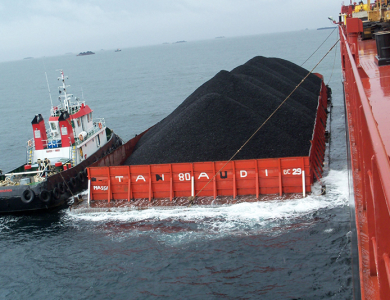Inspection of goods quantity
Quantity Survey Service: Procedures, Standards, and Practical Applications
In today's rapidly growing global trade environment, accurately verifying the quantity of goods before, during, and after transactions has become essential. Quantity Survey services were established to ensure transparency and fairness in commercial dealings, protect stakeholders' interests, and comply with legal regulations. This article provides a comprehensive overview of quantity surveying, from basic concepts and implementation procedures to practical applications across various industries.
1. What is Quantity Surveying?
Quantity surveying is the process of inspecting, verifying, and certifying the quantity of goods, products, or materials based on specific measurement standards and methods. This service is typically conducted by independent inspection bodies or authorized agencies to ensure that delivered goods match contractual agreements.
1.1. Objectives of Quantity Surveying
-
Ensure accuracy: Verify actual quantities against declared amounts.
-
Minimize risks: Detect discrepancies or fraud early in transactions.
-
Legal compliance: Meet customs, tax, and international regulatory requirements.
-
Dispute resolution: Provide objective evidence in case of conflicts between parties.
1.2. Applicable Goods
-
Import/export goods (containers, bulk cargo, packaged items).
-
Industrial materials (steel, cement, chemicals).
-
Agricultural products (rice, coffee, sugar).
-
Machinery and electronic equipment.
2. Importance of Quantity Surveying
2.1. For Businesses
-
Cost savings: Prevent losses due to quantity discrepancies.
-
Enhanced reputation: Ensure transparency in international trade.
-
Logistics optimization: Improve shipping and warehousing planning.
2.2. For Regulatory Authorities
-
Market quality control: Prevent counterfeit or substandard goods.
-
Trade facilitation: Streamline customs procedures for inspected goods.
2.3. For Consumers
-
Consumer protection: Receive the correct quantity as promised.
-
Product safety: Avoid purchasing short-measured or inferior goods.
3. Quantity Survey Process
3.1. Pre-Survey Preparation
-
Gather documentation: Contracts, invoices, packing lists.
-
Select methodology: Direct weighing, manual counting, or scanning technology.
-
Inspect equipment: Ensure scales, measuring tools, and scanners are calibrated.
3.2. Conducting the Survey
-
Initial inspection: Assess storage conditions and warehouse layout.
-
Detailed measurement:
-
Packaged goods: Count boxes, cartons, or pallets.
-
Bulk cargo: Measure volume and weight.
-
Containerized goods: Verify seals and pallet quantities.
-
-
Documentation: Photograph/video evidence for records.
3.3. Reporting
-
Data compilation: Compare findings with contract terms.
-
Discrepancy resolution: Propose solutions for shortages/overages.
-
Issue survey certificate: Legally binding documentation.
4. Quantity Survey Methods
4.1. Manual Counting
-
For packaged goods (boxes, bags).
-
Pros: Simple, low-cost.
-
Cons: Prone to errors with large volumes.
4.2. Direct Weighing
-
Uses electronic scales, platform scales, truck scales.
-
Ideal for bulk commodities (grains, coal).
4.3. Advanced Scanning
-
Barcode/RFID scanners, smart cameras.
-
Efficient for warehouse/supermarket inventories.
4.4. Statistical Sampling
-
Random sampling for homogeneous goods.
-
Saves time while maintaining accuracy.
5. International Quantity Survey Standards
5.1. ISO 2859 (Sampling Inspection)
-
Guidelines for representative sampling.
5.2. ISO 9001 (Quality Management)
-
Ensures rigorous survey process controls.
5.3. INCOTERMS 2020
-
Defines buyer/seller responsibilities for quantity verification.
5.4. Industry-Specific Standards
-
ASTM, JIS, GOST (varies by commodity type).
6. Practical Industry Applications
6.1. Import-Export
-
Pre-shipment container inspections.
-
Dispute resolution at destination ports.
6.2. Retail & Distribution
-
Warehouse/supermarket stock audits.
-
Detect supply chain losses.
6.3. Manufacturing
-
Verify raw material inputs.
-
Optimize inventory management.
6.4. Construction
-
Survey construction materials (steel, bricks).
-
Track project progress via completed quantities.
7. Selecting a Reliable Survey Provider
7.1. Evaluation Criteria
-
Government-licensed operations.
-
Industry-specific expertise.
-
Modern equipment and transparent methodologies.
7.2. Leading Surveyors
-
International: SGS, Bureau Veritas, Intertek.
-
Vietnam: QUATEST, Vinacontrol.
8. Cost & Timeframe
8.1. Cost
-
Basic: 500,000 – 3,000,000 VND (varies by scope).
-
Complex surveys (bulk/containers): Higher fees.
8.2. Duration
-
Standard: 1-2 days.
-
Full warehouse audits: 3-5 days.
Conclusion
Quantity surveying is indispensable in modern commerce, helping businesses mitigate risks and enhance operational efficiency. Partnering with professional surveyors and adopting advanced technologies ensures accuracy while reducing costs. Companies should proactively integrate this service into quality control systems to optimize production and trade operations.
Contact professional survey companies today for detailed consultation!
 Email: surveyor.oceanhigh@osivietnam.com
Email: surveyor.oceanhigh@osivietnam.com
 Hotline:
Hotline: 





